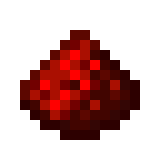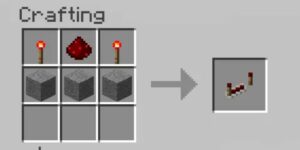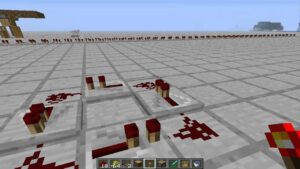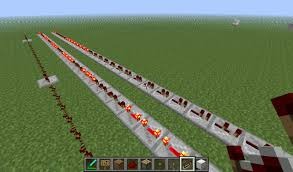Master the Art of Making Redstone Repeaters in Minecraft
The redstone repeater in Minecraft is an essential tool for anyone looking to build more complex redstone circuits. It allows players to extend the reach of redstone signals, introduce delays, and control signal direction, making it a crucial component for building advanced contraptions. In this guide, we’ll walk you through the process of crafting a redstone repeater, its various uses, and tips for maximizing its potential in your redstone builds.
What Is a Redstone Repeater in Minecraft?
A Redstone Repeater in Minecraft free is a versatile redstone component that plays a crucial role in building complex redstone circuits. It serves three main functions: extending redstone signals, introducing delays, and controlling the direction of signal flow. Redstone signals normally weaken after traveling 15 blocks, but placing a repeater in the path of a fading signal resets it back to full strength, allowing it to reach greater distances. Additionally, a redstone repeater can introduce a delay between 0.1 and 0.4 seconds, adjustable by right-clicking, which is ideal for creating timed mechanisms. It also ensures that signals flow in a single direction, preventing backflow and helping to maintain organized circuits. With these capabilities, the redstone repeater is essential for creating everything from simple traps to intricate automated systems in Minecraft.
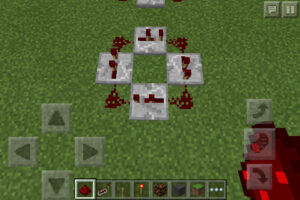
Materials Needed to Craft a Redstone Repeater
– Redstone Dust (1 unit):
- Obtained by mining Redstone Ore, which is typically found deep underground between levels Y=-63 and Y=15.
- Use an iron pickaxe or better to mine Redstone Ore and collect Redstone Dust.
– Redstone Torches (2 units):
- To craft each Redstone Torch, combine 1 Redstone Dust and 1 Stick in the crafting table.
- You will need 2 Redstone Torches to craft a redstone repeater.
– Stone (3 units):
- Regular Stone, not cobblestone, is required for the recipe.
- Obtain stone by smelting Cobblestone in a Furnace.
Step-by-Step Guide to Crafting a Redstone Repeater
Step 1: Open the Crafting Table
- Make sure you have access to a Crafting Table (3×3 crafting grid).
- Right-click the crafting table (or use the interact button depending on your platform) to open the crafting interface.
Step 2: Arrange the Materials
- Top Row: Place 1 Redstone Torch in the left slot and 1 Redstone Torch in the right slot.
- Middle Row: Place 1 Redstone Dust in the center slot.
- Bottom Row: Place 3 Stone across all three slots (left, center, right).
Step 3: Craft the Redstone Repeater
- If you have arranged the materials correctly, a Redstone Repeater will appear in the result box of the crafting table.
- Drag the Redstone Repeater into your inventory to complete the crafting process.
Uses of a Redstone Repeater in Minecraft
– Extending Redstone Signals: Redstone signals naturally weaken and fade after traveling 15 blocks. A redstone repeater can reset the signal strength back to maximum (15), allowing the signal to travel further. By placing a repeater at intervals along a redstone line, you can extend the reach of a redstone signal indefinitely.
– Adjusting Signal Delay: One of the most useful features of a redstone repeater is its ability to introduce a delay in redstone circuits. By right-clicking on the repeater, you can adjust the delay from 0.1 to 0.4 seconds. This delay can be used to synchronize different redstone components, such as doors, pistons, or trap mechanisms, making it ideal for timing-based systems.
– Directional Control: A redstone repeater only allows signals to pass in one direction, which means it can control the flow of signals in circuits. This directional feature is useful for creating controlled systems, as it prevents unwanted backflow of redstone signals. It ensures that the signal only moves from the input side to the output side, which is essential for more organized and predictable circuits.
– Locking Signals: A repeater can lock other repeaters when a redstone signal is applied to its side. When locked, the repeater will hold its current state (on or off), even if the input changes. This feature is useful for creating memory circuits, complex logic gates, and more advanced redstone contraptions where you need to hold a signal temporarily.
Redstone Repeater Efficiency Tips
– Optimize Signal Strength:
- Place Repeaters at Proper Intervals: To maintain signal strength over long distances, place a repeater every 15 blocks to reset the signal to its maximum strength. This will ensure that the signal does not weaken or fade out before reaching its destination.
- Use Repeaters for Long Redstone Lines: Instead of running long redstone dust trails, use repeaters to boost the signal strength. This minimizes the risk of losing signal power, especially in large builds.
– Adjusting Delays for Synchronization:
- Fine-Tune Timings: Use repeaters to synchronize multiple actions, such as opening double doors or activating pistons in sequence. Adjust the delay on each repeater by right-clicking it to set different delay levels (0.1 to 0.4 seconds) and achieve perfect timing.
- Create Controlled Delays in Complex Circuits: When building mechanisms like automatic farms, traps, or lighting systems, using repeaters to introduce precise delays can make the difference between a functional and malfunctioning build.
– Build Compact Circuits:
- Reduce Space with Repeaters: Use repeaters instead of long redstone dust lines to create more compact redstone circuits. This is especially helpful in tight spaces or when designing circuits inside buildings.
- Use Repeaters to Redirect Redstone Paths: Repeaters can help manage and redirect redstone signals in a smaller area, allowing for cleaner and more organized designs.
– Avoiding Redstone Signal Clashes:
- Prevent Signal Backflow: Use the directional feature of repeaters to prevent unwanted signals from flowing back into circuits. This is crucial when building multi-layered or intertwined redstone mechanisms.
- Separate Circuits with Repeaters: In more complex designs, you can use repeaters to isolate different parts of a circuit, preventing interference between adjacent redstone lines.
– Creating Clock Circuits with Repeaters:
- Build Simple Clock Circuits: A redstone clock provides a continuous on/off signal and can be created using just a few repeaters in a loop. Adjust the delay on each repeater to control the speed of the clock.
- Use Repeaters for Pulse Extenders: Combine repeaters in a row to create a pulse extender, which is useful for keeping a redstone signal active for longer. This is particularly handy when building systems like trapdoors or automatic doors that need to stay open for a short period.
Conclusion
Crafting a redstone repeater in Minecraft is a simple yet essential skill that can unlock countless possibilities for your redstone builds. Whether you need to extend redstone signals over long distances, introduce precise delays, or control the flow of your circuits, the redstone repeater is a versatile tool that can transform your in-game creations. By mastering the use of redstone repeaters, you can elevate your gameplay experience and create advanced mechanisms with ease.
Ready to enhance your redstone skills? Gather your materials, craft your redstone repeater, and start building more intricate redstone circuits today! For more Minecraft tips, tricks, and guides, visit APKAFE and take your redstone expertise to the next level!
See more:
>> How to make Food in Minecraft
>> How to install Minecrat Mods
>> Play with Friends in Minecraft
>> How to make stuff in Minecraft
User Reviews

